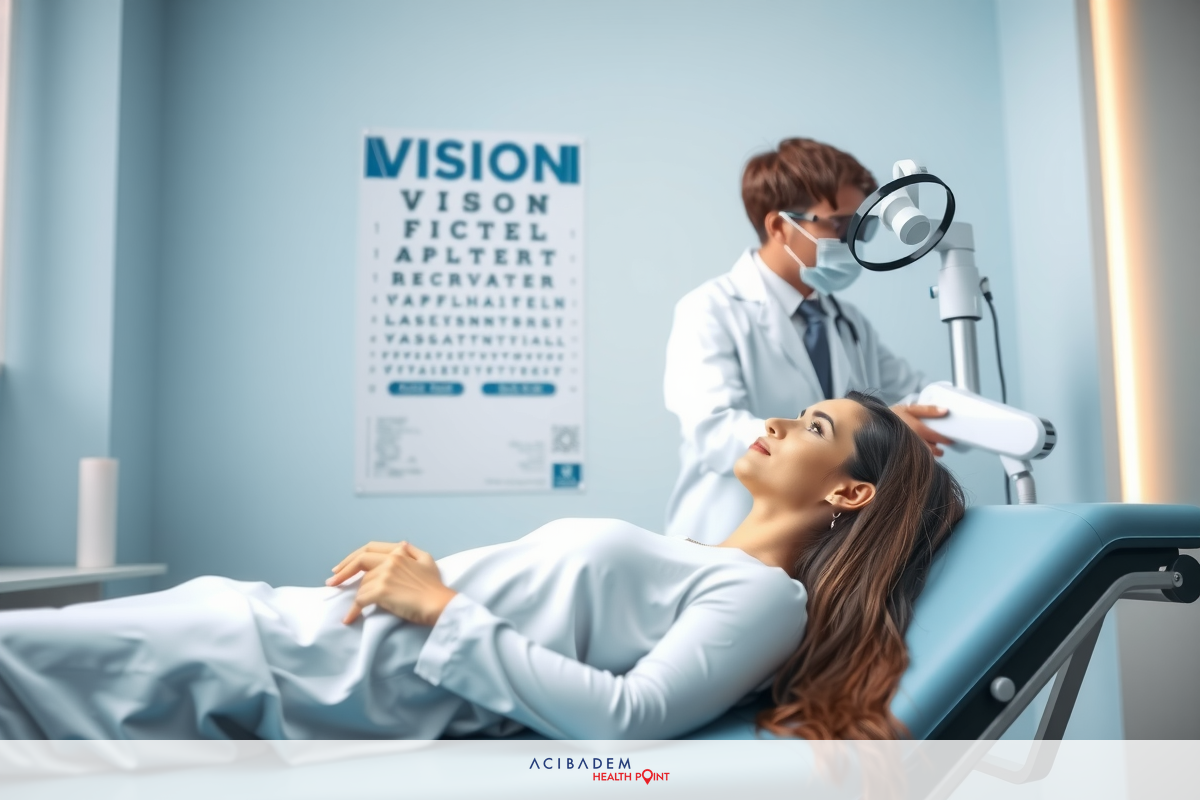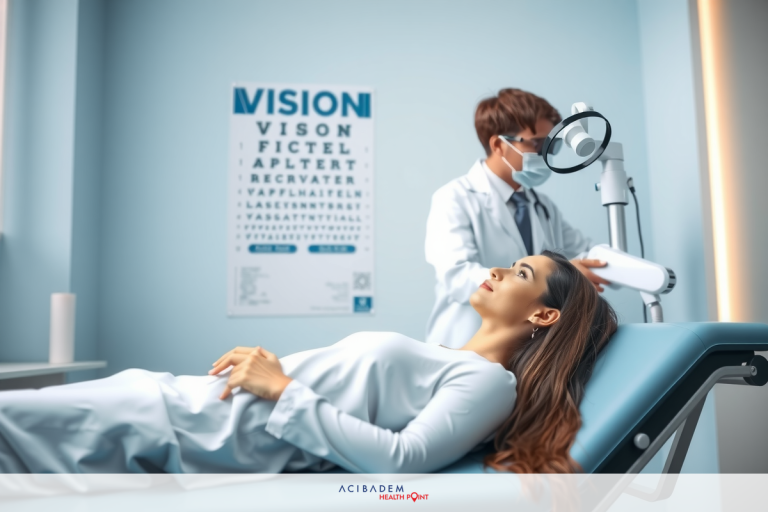Can Laser Eye Surgery Correct Nearsightedness?
Can Laser Eye Surgery Correct Nearsightedness? Laser eye surgery has become an increasingly popular solution for those desiring freedom from corrective lenses. Its popularity stems largely from its ability to correct refractive errors like nearsightedness. Imagine the delight in waking up with clear vision, no longer dependent on glasses or contacts to navigate the world.This form of vision correction is not only convenient but also highly effective. The process involves reshaping the cornea—the transparent front part of the eye—to allow light entering the eye to be properly focused onto the retina for clearer vision. While this brief explanation may make it seem simple, laser eye surgery is an intricate operation that requires expert precision and understanding.
There are multiple factors influencing whether one can undergo laser surgery for nearsightedness; these include age, overall health condition and severity of nearsightedness among others. Consultation with a professional ophthalmologist provides insight into individual suitability for such treatment options.
How Does Laser Eye Surgery Correct Nearsightedness?
Laser eye surgery is a procedure that has been designed with the intention of correcting refractive errors such as nearsightedness. The essence of this process revolves around reshaping the cornea, which is the transparent layer forming the front of the eye. In order to understand how laser eye surgery corrects nearsightedness, it’s crucial to first comprehend what causes nearsightedness.
Nearsightedness, also known as myopia, occurs when light entering your eyes doesn’t focus correctly due to an elongated eyeball or overly curved cornea. This results in distant objects appearing blurry while close objects are seen clearly. Therefore, vision correction through laser eye surgery aims at altering this abnormal shape and restoring optimal light focusing.
This alteration takes place during a quick yet highly precise operation involving lasers aimed at your cornea. Your surgeon will start by creating a thin flap on your cornea using a femtosecond laser in procedures like LASIK (laser-assisted in situ keratomileusis) – one type of refractive surgery for treating myopia. Once created, they lift this flap revealing your underlying corneal tissue ready for reshaping.
The next phase involves another type of laser known as an excimer laser; renowned for its ability to remove minute amounts of tissue from the surface without generating heat potentially damaging surrounding areas. The excimer laser ablates or removes layers from the central part of your stromal layer – which forms most parts of your cornea – effectively flattening it out and helping correct nearsightedness.
Once complete, they return back the previously lifted flap onto its original position marking an end to vision correction via refractive surgery such as LASIK or PRK (photorefractive keratectomy). It’s worth noting that while these surgeries may seem similar there are differences depending on factors like the health of your cornea and personal preferences.
While this article offers an overview, it’s always recommended to consult with your eye care professional before making decisions about laser eye surgery. They will provide comprehensive information tailored specifically to you and guide you through understanding exactly how laser eye surgery can correct nearsightedness based on your individual situation.
Benefits of Laser Eye Surgery for Nearsightedness
Laser eye surgery is an innovative procedure that has transformed the lives of many people suffering from nearsightedness. It’s proven to be an effective treatment option that offers a myriad of benefits to patients. Let’s

explore these advantages, each contributing in its own way to making laser eye surgery a preferred
choice for vision correction.
1. Permanent Vision Correction: Unlike glasses or contact lenses, which only correct your vision while wearing them, laser eye surgery provides a long-lasting solution to nearsightedness. The results are typically permanent after recovery.
2. Improved Quality of Life: With corrected vision, you can enjoy daily activities without worrying about losing or breaking eyewear. This means greater freedom during physical activities and overall improved life experience.
3. Reduced Dependence on Eyewear: Post-surgery, most patients find they no longer need their glasses or contacts every day — if at all — resulting in significant savings over time.
4. Quick Recovery Time: Although it varies by individual, generally speaking the recovery period post- laser eye surgery is remarkably quick with most people returning back to their normal routines within a few days.
5. High Success Rate: Laser eye procedures have been around for decades and boast high success rates when performed by experienced surgeons.
Individual experiences vary due to factors like age and health. Expectations should be discussed in consultation sessions before undergoing laser cornea reshaping for distant vision correction in myopia.
Recovery and Results of Laser Eye Surgery
After laser eye surgery, the road to recovery is generally swift. However, specific timelines can differ based on the individual’s unique healing process and the type of refractive surgery performed. Immediately after the procedure, you might experience some discomfort or mild burning sensation in your eyes but rest assured – this is normal.
During these initial hours following surgery, it’s critical that you avoid rubbing your eyes as this could dislodge the corneal flap created during LASIK surgery. You may also notice fluctuations in your vision quality along with glare or halos around lights – again an expected part of postoperative recovery; hence no cause for alarm.
Ensure that you adhere strictly to all post-operative instructions provided by your surgeon. These will include guidelines concerning activities such as reading, watching television or using a computer which are typically discouraged for at least a day post-surgery due to their strain-inducing nature on recovering eyes.
Typically within 48 hours, patients start noticing significant improvements in their vision although complete stabilization may take several weeks up to a couple months depending on individual cases and types of surgical procedures employed – another factor underscoring personalized consultations prior deciding upon such treatments aimed at correcting nearsightedness through refractive surgeries involving lasers.
Laser eye surgeries for myopia offer high success rates and patient satisfaction. They provide a cost- effective, convenient alternative to eyewear, simplifying daily routines.
Like any other surgical procedure there’re inherent risks involved alongside benefits discussed above hence crucial maintaining open communication with your eye care professional ensuring comprehensive understanding of what’s involved during journey towards clearer vision through laser surgery.
Frequently Asked Questions
What does laser eye surgery entail?
Laser eye surgery is a refractive surgical procedure that aims to correct vision issues like nearsightedness. The process involves reshaping the cornea so light entering the eye can be properly focused onto the retina for clearer vision.
How quickly will I see results after my laser eye surgery?
You might notice an immediate improvement in your vision post-surgery, but it's normal for sight to fluctuate for a few days or weeks following treatment. Full stabilization of your vision may take several weeks up to a few months.
Is everyone with nearsightedness eligible for laser eye surgery?
Not everyone is suitable for this form of correction. Certain factors such as age, overall health, and severity of nearsightedness among others could influence eligibility. It's important to have thorough consultations with medical professionals before making any decisions.








